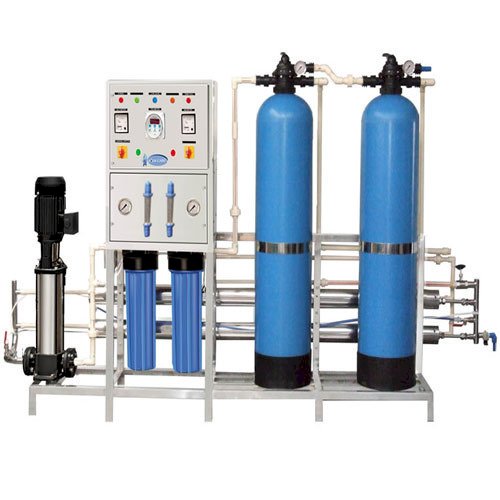Global Residential Water Treatment Market to Cross USD 34 Billion by 2028
A recent study conducted by the strategic consulting and market research firm, BlueWeave Consulting, revealed that the Global Residential Water Treatment Market was worth USD 21.38 billion in the year 2021. The market is projected to grow at a CAGR of 7.1%, earning revenues of around USD 34.29 billion by the end of 2028.

A recent study conducted by the strategic consulting and market research firm, BlueWeave Consulting, revealed that the Global Residential Water Treatment Market was worth USD 21.38 billion in the year 2021. The market is projected to grow at a CAGR of 7.1%, earning revenues of around USD 34.29 billion by the end of 2028. The Global Residential Water Treatment Market is booming due to the growing demand for water treatment systems in households as a result of rising water pollution and urban population growth. Moreover, because of the shortage of freshwater resources, both developed and emerging nations experience water scarcity issues. As a result, governments have increased their focus on water treatment technology to provide clean and usable water. This supported the market for residential water treatment during the forecast period (2022-2028). Furthermore, Global Residential Water Treatment Market is one of the most emerging markets that grow continuously owing to the fast integration of new technologies such as the Internet of Things (IoT), Artificial Intelligence (AI), cloud computing, and others. However, due to the high cost of water treatment equipment, the price of water treatment technology has gone up recently. Additionally, there are several steps in the technology used to cleanse water that needs powerful devices that can only be operated by qualified experts. The market for water treatment technologies is thus hampered by expensive equipment and a lack of qualified workers.
People's Growing Concern about their Health Propels the Market Forward
With the rise in health issues caused by water-borne diseases such as Typhoid, Cholera, and Malaria, all of which are caused by ingesting contaminated water, the market is expected to boost water purifier sales around the world. Water purifiers disinfect and clean the water, making it safe to drink. This precautionary trend is expected to benefit the global residential water purifiers market during the forecast period. Moreover, continuous improvements to water purifier technology reinforce the market growth. Because of the abundance of talent available around the world, R&D units are encouraged to develop products at a lower cost. Manufacturers of water purifiers are experimenting with cutting-edge water filtration technologies like carbon nanotubes and sophisticated membrane systems.
Request for Sample Report @ https://www.blueweaveconsulting.com/report/residential-water-treatment-market/report-sample
Rising Government Support to Raise Public Awareness is Driving Market Growth
According to the UN Environmental Program, the water quality of aquifers, rivers, and lakes puts roughly 3 billion people in the world at risk of developing diseases. Dramatic changes in water availability are occurring in one-fifth of the world's river basins, and 2.3 billion people live in "water-stressed" countries, including 721 million in regions where the water situation is "serious." Events are being held by several government entities to raise public awareness of the harmful effects of contaminated water. For instance, the United Nations honors World Water Day on March 22 every year to increase public awareness of the value of water in ensuring food security, producing energy, advancing industry, and other areas of social, economic, and human development.
In addition, there is a growing need for effective and equitable water management around the globe. Thus, market participants are spending money on product development and technological breakthroughs to guarantee a sufficient supply of these goods. Due to the introduction of new, technologically advanced solutions to the market, product demand is on the rise. For instance, refrigerator water treatment systems provide instant access to chilled, drinkable, and reviving filtered water as well as ice cubes made from that water. Compared to many other water filters on the market, General Electric's new smart household water treatment systems have been approved to minimize a larger variety of contaminants. Artificial intelligence (AI) and other connected technologies are facilitating the delivery of efficiency and convenience. Additionally, these goods increase energy efficiency, support product effectiveness, and enhance consumer satisfaction.
Challenge: Expensive Installation, Equipment, and Operation
Despite the numerous benefits of residential water treatment, the installation of residential water treatment systems is costly. A water softener, for example, which is used to convert hard water to soft water, can cost between USD 2,000 and USD 4,000. The installation of a water softener necessitates the use of technicians and installers, which results in high installation costs. Some residential water treatment systems have high operating and maintenance costs. Distillation systems, for example, use a significant amount of energy for both cooling and heating. Some Asian and African countries have highlighted these issues. Water distribution and storage infrastructure are also lacking in underdeveloped Asian and African countries. This could be a problem.
Segmental Coverage
Global Residential Water Treatment Market - By Application
Based on application, the Global Residential Water Treatment Market is segmented into Residential Buildings/Apartments, Individual Housing, Villas, Others. The residential sector is expected to be the largest segment of the Global Residential Water Treatment Market. The residential application is primarily concerned with the use of water treatment systems to generate potable water for domestic consumption. Because of the growing demand for treated drinking water, removal of unpleasant taste, odor, and discoloration, suspended solids, biodegradable organics, and pathogenic bacteria, the residential water treatment application is expected to grow rapidly.
Impact of COVID-19 on Global Residential Water Treatment Market
During the COVID-19 pandemic, people are more concerned about their health and are taking extra precautions to ensure their safety. Furthermore, the work-from-home culture has increased residential demand for point-of-use water treatment systems. The primary impediment to market growth, however, is the high installation, equipment, and operation costs. The point-of-use water treatment systems industry is expanding overall due to health concerns, rising demand for high-quality drinking water, and increased customer access to point-of-use devices through retail channels. In response to stringent government regulations imposed by various countries, companies are focusing on manufacturing environmentally friendly point-of-use water treatment systems.
Competitive Landscape
The leading market players in the Global Residential Water Treatment Market are A.O Smith Corporation, Kent Supreme, Eureka Forbes, Panasonic, Aqua Care, 3M, Aquasana, Waterwise Inc, Everpure, GE Appliances, other prominent players. The Global Residential Water Treatment Market is highly fragmented with the presence of several manufacturing companies in the country. The market leaders retain their supremacy by spending on research and development, incorporating cutting-edge technology into their goods, and releasing upgraded items for customers. Various tactics, including strategic alliances, agreements, mergers, and partnerships, are used.
Contact Us:
BlueWeave Research Blog
Phone No: +1 866 658 6826
Email: info@blueweaveconsulting.com




























